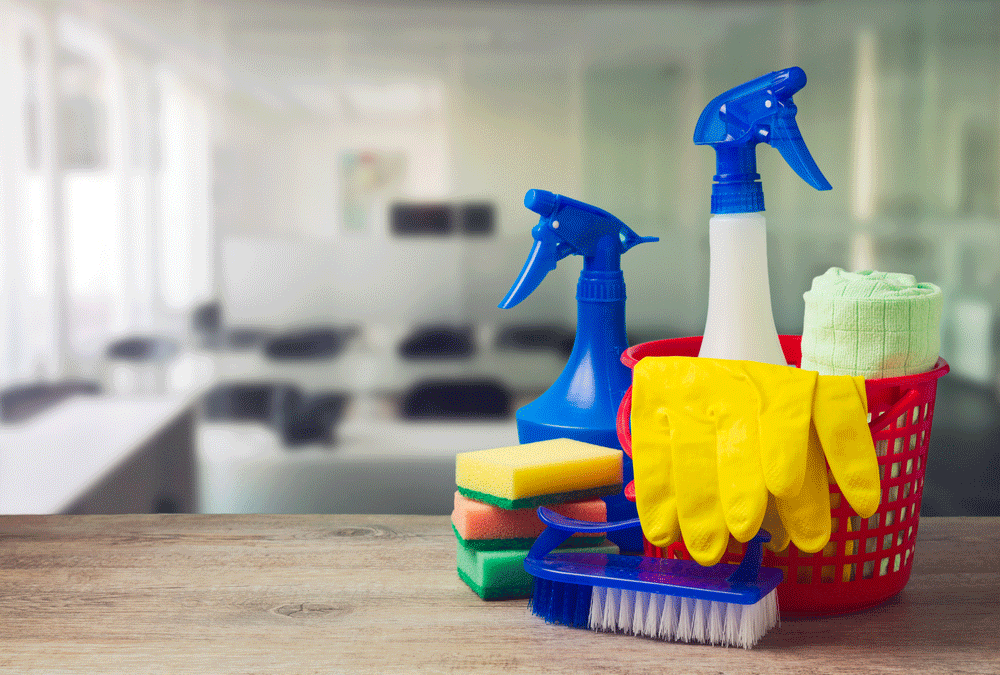This year, I rummaged through my closet and was able to pull together three bags of gently-worn clothes and two bags of shoes for donation. In fact, my dog, Cooper even managed to get rid of a bag of chewed up toys and give some of his old clothes to his new neighborhood friends. During my spring cleaning efforts, I discovered a few new outfits I forgot existed, found the other pair of earring that I swore I lost and read through some old journal entries that reminded me of a few commitments that I had to see through before the close of the year. In the end, I felt both productive and accomplished, and ultimately, self-assured that I could navigate my own household again with ease.
Feeding off this spring cleaning, adrenaline high I wondered why I hadn’t considered bringing spring cleaning to the office. As a project manager, I can hardly find anything more menacing than being unable to locate a file on the share drive let alone a folder on my very own desk. And when you realize you can’t distinguish one year’s folder from another’s and you’re cross-pollinating one report into another campaign, you’re setting up your team for a huge disappointment and possibly even failure. Don’t go there.
While spring cleaning is far from an effortless task, there are ways you can make it more manageable and less daunting – especially in the work place. In channeling my acute sense for order and cleanliness, I’ve put together a spring-cleaning, project management checklist that will be sure to help you restore order within the office space.
Start by putting together a checklist. If you don’t know what it is you’re going to clean, chances are you might miss a few spots. Start with a brainstorm session and throw some ideas up onto the white board. Give yourself a set amount of time, so you don’t get carried away and go overboard. When you have a reasonable task list, begin to bucket those ideas and group them accordingly. Here are a few ideas from my project management checklist:
- Desktop – When you’re in the process of launching a product or a campaign, running up to the hour on a deadline or scrambling to get it together for a client meeting, it’s likely your desk is cluttered with notes and file folders stacked a mile high. It’s easy to run from one meeting to the next and toss those proofs, article printouts, notebooks and loose leaf papers on your desk and let them sit for days or even weeks without tucking them away. I don’t know about you, but seeing those file folders and papers sprawled out on my desk can lead me into a stress-induced panic frenzy. Unless you’re going to reference them in the next hour or two, do yourself a favor and file them away in your drawers or file cabinets. Out of sight doesn’t necessarily mean out of mind.
- Computer Work Station – Once you’ve decluttered your desktop, you should now be able to see your computer monitor, keyboard and mouse in a near-perfect line of vision. Wipe down your monitor and your desktop surroundings with a damp cloth and some disinfectant spray. Make sure to clean your mouse and phone in a similar fashion. To get between the crevices of your keyboard, grab a can of compressed air. Also, make sure to dust underneath your monitor and any other equipment you might not have moved for ages. And finally, don’t forget to sanitize your own hands afterwards.
- Virtual Desktop – I’m going to admit that I’m a culprit of opening up a temporary Word, PPT or Excel document and just throwing it onto the desktop. By the end of the week, you probably have five to ten new documents, and by the second week, that number has probably doubled or tripled, until you have no inch of space left on your desktop. To prevent giving yourself and others sensory overload, clear your desktop of files that are not currently active and store them on the network or share drive.
- Share Drive – Files and assets that are part of the same campaign should be housed in the share drive so the collective team can access them on an as needed basis. It’s easy to accumulate files on your desktop, thumb drive or append them to cloud-based storage or software. It’s only when that file is missing or inaccessible do you begin to run yourself up the wall. Do yourself and your team a favor by creating a process to package assets and final deliverables, and placing them in the share drive. Come up with a naming convention that makes each final unique and easily identifiable by including the product or service name, asset type and date modified. Finally, create a weekly or bi-weekly ‘checks and balances’ to make sure the share drive is up to date. You’ll be grateful the next time you try to locate that file again.
- Software and Tools – It’s not enough to scrub only the files on your desktop and share drive. Similar to cleaning behind your ears, you’ll want to make sure you’re scouring through your project management software (WorkFront, Basecamp, Trello, etc.) or tool, and backup all your files. Drop them in the share drive or create an archive by year. You’ll save yourself a lot of time and trouble down the line.
Create a plan of attack. Now that you have your spring-cleaning tasks down on paper, you’ll want to categorize and group together similar tasks to maximize time and gain efficiencies. One way to organize them would be to separate the tasks associated with the work station from those on the computer screen. Once you’ve pulled apart those tasks, it will be easier to determine the type and amount of cleaning supplies, assign time frames and enlist the help of your team.
Enlist the help of your team members. As with most activities – spring cleaning is no exception – it’s more fun to do it in pairs than to do it alone. Plan ahead and add spring cleaning to the calendar, so you and your team will be prepared to set aside some time. Doing so will help alleviate any unnecessary workload stress and get your team in the right mindset to clean. Expose them to your checklist and have them pick one or two tasks from the list. And don’t forget to say please and thank you.
Take strides to achieve your spring cleaning goals. While most people allocate a day or two to spring cleaning, you don’t need to hold yourself to a strict window of time. Make sure to take into consideration your team’s work style and plan around major events or campaigns. Schedule time to scrub the grease and grime, but then consider monthly cleaning regimens, so the annual clean doesn’t need to be as strenuous.
Now you can be just as productive spring cleaning in the office as you are in the household. By creating a checklist, putting together a plan and enlisting the help of your team, you will not only make spring cleaning wieldy but you can also make it more gratifying and even fun. Make sure to tuck this checklist away until the next spring-cleaning season and if you should dare, share what’s on your spring-cleaning, project management checklist.










Follow Me